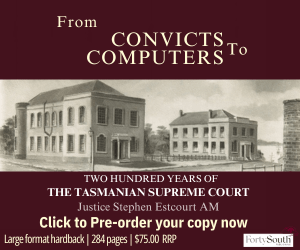In Australian Building and Construction Commissioner v Albert [2021] FCA 168 (3 March 2021) the court ruled on certain objections to evidence in the proceeding.
Some of the applicant’s witnesses gave evidence in chief by affidavit, which affidavits referred to and annexed copies of earlier statements. The respondents objected to evidence of this nature as being prior statements made to the applicant (category 1 evidence) and prior statements written, or purportedly written, by the deponent after the relevant events (category 2 evidence).
The objections of the respondent included that these statements were an attempt to bolster the credibility of the relevant witnesses and were thereby inadmissible. The applicant submitted (inter alia) that the statements were not included in the affidavits as an attempt to bolster the credibility of the respective witness. The witness was, in essence, adopting the veracity of statements he had earlier made, as evidence in chief.
The court considered various authorities as to the relevance of and admissibility of prior written statements (at [11]-[31]). Having done so, the court held the evidence to which objection was taken admissible for reasons including the following:
- The category 1 evidence and the category 2 evidence was relevant under s55 of the Evidence Act 1995 (Cth) (at [33]).
- The evidence was deposed by way of evidence in chief of the relevant witnesses. It was not evidence subsequently sought to be adduced by the applicant as credit evidence to counter allegations of invention or reconstruction, and therefore was distinguishable from cases such as The Nominal Defendant v Clements (1960) 104 CLR 476 and Humphries v The Queen (1987) 17 FCR 182 (at [34]).
- Authorities establish that s37(3) of the Evidence Act 1995 anticipates that a previous statement of a witness (such as those statements in categories 1 and 2) can be adopted by the witness as true and correct, and as evidence in chief, of that witness (at [35]-[36]).
- There being no live issues of credit in the case in respect of the applicant’s witnesses, it was difficult to see any inherent unfairness in ruling the evidence admissible (at [37]-[38]).
- The impugned evidence was not inadmissible as credibility evidence within the meaning of s101A of the Evidence Act 1995 (at [43]-[44]).
- The impugned evidence was not hearsay. Collier J explained (at [45]): “To paraphrase Bromwich J in Australian Competition and Consumer Commission v Australian Institute of Professional Education Pty Ltd (No.2), the adopted written statements and file notes were no more hearsay than they would be if the text of that adopted material was instead simply copied into the adoption affidavit, but with the loss of the greater contemporaneity of the prior written account”.
Dan Star QC is a Senior Counsel at the Victorian Bar, ph 03 9225 8757 or email danstar@vicbar.com.au. The full version of these judgments can be found at austlii.edu.au. Numbers in square brackets refer to a paragraph number in the judgment.








Share this article